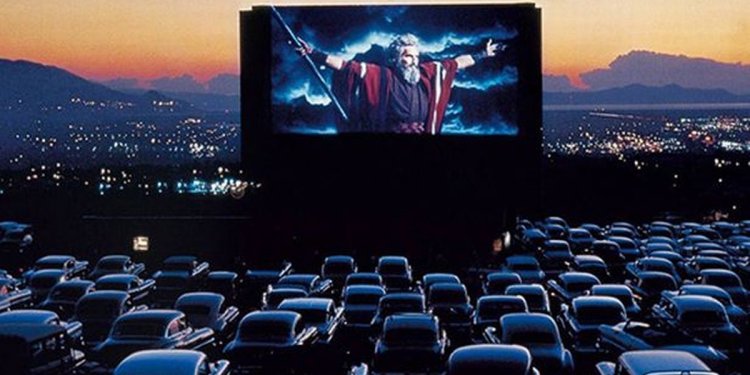
Cinema Alexandria Scotland
 John Ford was created John Martin Feeney, February 1, 1894, at his father’s farm in Cape Elizabeth, Maine, the little one of Irish immigrants. The Irish had been a ghettoised minority, then, therefore was only toward the termination of his life, Ford stated, whenever Kennedy was elected president, that he felt like a first-class citizen. He grew up in Portland, where his daddy had a bar.
John Ford was created John Martin Feeney, February 1, 1894, at his father’s farm in Cape Elizabeth, Maine, the little one of Irish immigrants. The Irish had been a ghettoised minority, then, therefore was only toward the termination of his life, Ford stated, whenever Kennedy was elected president, that he felt like a first-class citizen. He grew up in Portland, where his daddy had a bar.
He sailed a ship, played football, and read history. At 20 he took the train to California, to help make films together with bro Frank, going western across a continent as their daddy choose to go West across an ocean.
Frank had been older by 13 years. He previously try to escape at home whenever Jack had been five, to join a circus, and after a huge selection of pictures for Centaur, Edison, Melies, and Ince, in nj-new jersey, Texas, and California, now he had been “Francis Ford”, a high star-director-writer together with own organization at Universal. He had return home to Portland driving a Stutz with Grace Cunard, their red-haired, green-eyed co-star and fan.
 Jack Ford, as he today became, spent the next three years in a rigorous, all-encompassing apprenticeship under their brother. “He was outstanding cameraman”, Jack recalled in 1966. “There’s nothing they’re doing today – these items that are supposed to be so brand-new – that he hadn’t done; he was really a great artist, an excellent musician, a hell of a actor, a manager – Johnny of investments – and master of most; he just couldn’t concentrate on a very important factor too much time. But he had been really the only influence I had, employed in photographs.”
Jack Ford, as he today became, spent the next three years in a rigorous, all-encompassing apprenticeship under their brother. “He was outstanding cameraman”, Jack recalled in 1966. “There’s nothing they’re doing today – these items that are supposed to be so brand-new – that he hadn’t done; he was really a great artist, an excellent musician, a hell of a actor, a manager – Johnny of investments – and master of most; he just couldn’t concentrate on a very important factor too much time. But he had been really the only influence I had, employed in photographs.”
“Jack had been no good”, Frank remarked, “until he had been given some thing to do by himself where he could let himself get – and he proved himself after that.” What set Jack apart was his persistence. The requirements of John Ford’s acting design are available in Frank’s photographs: calm relating. You have the same love for vigorous action, painterly compositions, an underlying stream of oxymoronic humour, and heat: a sense of public sharing. Movies in those days were produced in community, besides, by the same troupe of players, author, cameraman, director month after thirty days – and both brothers discovered approaches to continue carefully with this mode of manufacturing long after it ceased being a business norm. It is hard to imagine either Ford manipulating an actor the way in which D.W. Griffith performed – for instance, Mae Marsh (in the courtroom of Intolerance [1916]) or Lillian Gish (in cabinet of Broken Blossoms [1919]) – or “staring” at these with a brutality in cutting and framing that appears often to aim, like occasionally in Hitchcock, for the optimum in sensationalism. And Griffith had a fondness for formal exposition, lordly length, large angles and unexpected close-ups that make him seem rapacious alongside the Fords’ reasonable or level angles, gentler cutting, and much more respectful distance.
And Griffith had a fondness for formal exposition, lordly length, large angles and unexpected close-ups that make him seem rapacious alongside the Fords’ reasonable or level angles, gentler cutting, and much more respectful distance.
Jack Ford’s first film, The Tornado (1917) (missing) had been created using his brother’s troupe, a satiric activity photo with an emotional twist: the hero (Jack Ford) needs cash to purchase their mommy a home in Ireland. His fourth movie, The Soul Herder (1917) (missing) was “a small gem”, based on Francis. Plus it started a four-year, 25-film organization with Harry Carey. Carey had been 39, the son of a White Plains unique sessions judge, and a seasoned veteran of Griffith’s Biograph troupe. Ford was just 21. Nonetheless they had been both about six foot, 170 pounds, and additionally they liked riding out to location on horseback, camping in bedrolls, and fleshing on stories because they went along. Later on they might let George Hively write-up the tales and obtain screen credit. Each of them existed collectively on Carey’s farm. Ford slept in the alfalfa patch. He was “adorable”, Harry’s partner Olive recalled. “He had an attractive walk, perhaps not also argumentative, good listener.” . Years later, we find Olive tending your house we come across in the beginning and end regarding the Searchers (1956).
Their particular flicks were effective due to Carey’s relaxed, receptive humility. He never ever appeared more advanced than his audience or his functions. Contrary to Western heroes like Tom combine or William S. Hart, “Cheyenne Harry” was a bum, a saddle tramp – a great badman, like plenty of Ford’s heroes. Universal promoted their 2nd photo, Straight Shooting (1917), as “The Greatest West Available.”





















